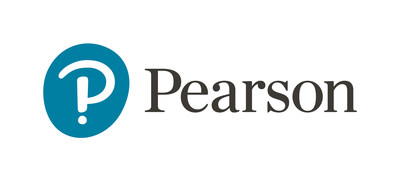PR Newswire
HOBOKEN, N.J., Nov. 27, 2023
New Pearson research shows Generative AI will have greater impact on white collar jobs than blue collar jobs in next 10 years
HOBOKEN, N.J., Nov. 27, 2023 /PRNewswire/ -- New workplace research from Pearson (FTSE: PSON.L), the world's leading learning company, finds that white collar roles are under greater threat from generative AI than blue collar roles, as the technology takes a greater foothold in the global economy.
Experience the full interactive Multichannel News Release here: https://www.multivu.com/players/English/9227551-pearson-skills-outlook-research-report-generative-ai-proof-jobs
The latest installment of Pearson's Skills Outlook series looks at 'Gen AI Proof Jobs' - analyzing the impact of generative AI on more than 5000 jobs in five countries – Australia, Brazil, India, the US and UK.
Looking specifically at the time spent on individual tasks in a working week, the research shows that around 30% of some white collar roles could be done by generative AI. The findings also showed that less than 1% of time spent on tasks involved in many blue collar jobs could be done by generative AI.
Many of the most affected white collar roles contain repetitive tasks – such as scheduling appointments or answering and directing calls - that could be easily replicated by generative AI. The white collar roles that are most generative AI proof tend to be the ones involving tasks related to mathematics, like engineers. Generative AI is currently notoriously inaccurate at maths computations, making those jobs a little more AI proof for the time being.
On the flip side, many blue collar roles - such as landscapers, mechanics, or construction workers - include manual labor or customer service elements that can't easily be replicated by generative AI.
In the US the most impacted jobs are (by % of time spent on tasks that can be automated or augmented by generative AI):
White Collar Jobs
- Medical Secretaries (-40%)
- Statement Clerks (-38%)
- Billing, Cost, and Rate Clerks (-38%)
- Loan Interviewers and Clerks (-38%)
- Bookkeeping, Accounting, and Auditing Clerks (-38%)
Blue Collar Jobs
- Farm Products Buyer (-27%)
- Amusement and Recreation Attendants (-26%)
- Restaurant, Lounge, and Coffee Shop Hosts (-24%)
- Food Service Managers (-22)
- Computer-Controlled Machine Tool Operators, Metal and Plastic (-21%)
Mike Howells, President, Pearson Workforce Skills, said:
"As employees look to the future, understanding which jobs are at risk from AI allows them to prepare. They should also consider where new roles might be created by Gen AI. Workers and employers should look at how they can ride this wave of change by using the best of AI and the best of human skills together – whether that is using the technology to take over repetitive tasks, so people can focus on high value activities, or enhancing those uniquely human skills like creativity, communication and leadership."
The least impacted jobs are:
White Collar Jobs
- Chief Executives (-10%)
- Civil Engineers (-10%)
- Electrical Engineers (-11%)
- Sales Managers (-13%)
- Architectural and Engineering Managers (-13%)
Blue Collar Jobs
- Bus and Truck Mechanics and Diesel Engine Specialists (0%)
- Dishwashers (0%)
- Highway Maintenance Workers (0%)
- Laundry and Dry-Cleaning Workers (0%)
- Solderers and Brazers (0%)
About the research
For this Skills Outlook research report, Pearson used tools based on generative AI to analyze the specific tasks related to more than 5,000 jobs and how much time is currently spent on each. We then calculated how much of a job's work, by time spent on individual tasks, would be affected by generative AI. This gives the percentage of time saved due to Generative AI by 2032, per task – and, so, which jobs will be most or least impacted. With nearly 1,400 enterprise clients, Pearson has a strong foundation and unique expertise in the workforce skilling market.
Notes to Editors
Media contact
[email protected]
Methodology - the data we used:
Census and other workforce datasets were consolidated to create a single view of the current workforce in the US, UK, Australia, India and Brazil. Using Pearson's proprietary occupations ontology of 5,600 jobs and 26,000 tasks, each job can be viewed as a collection of tasks. This allows our machine learning algorithms to calculate future technology impact on each job at a task level. Our models consider the impact of 16 groups of emerging technologies, with the rate of adoption for each technology tailored by country and industry. Alongside technology impact, economic modelling is used to account for country and industry-specific growth trends. In this analysis, the technology impact due to Generative AI technologies was calculated for every job in the five countries, looking 10 years into the future.
For further information see:
https://plc.pearson.com/en-GB/insights/pearson-skills-outlook-powerskills/impact-of-gen-ai-on-you-or-your-workforce
About Pearson
At Pearson, our purpose is simple: to add life to a lifetime of learning. We believe that every learning opportunity is a chance for a personal breakthrough. That's why our c. 20,000 Pearson employees are committed to creating vibrant and enriching learning experiences designed for real-life impact. We are the world's leading learning company, serving customers in nearly 200 countries with digital content, assessments, qualifications, and data. For us, learning isn't just what we do. It's who we are. Visit us at pearsonplc.com.

![]() View original content:https://www.prnewswire.com/news-releases/how-gen-ai-proof-is-your-job-301995983.html
View original content:https://www.prnewswire.com/news-releases/how-gen-ai-proof-is-your-job-301995983.html
SOURCE Pearson
